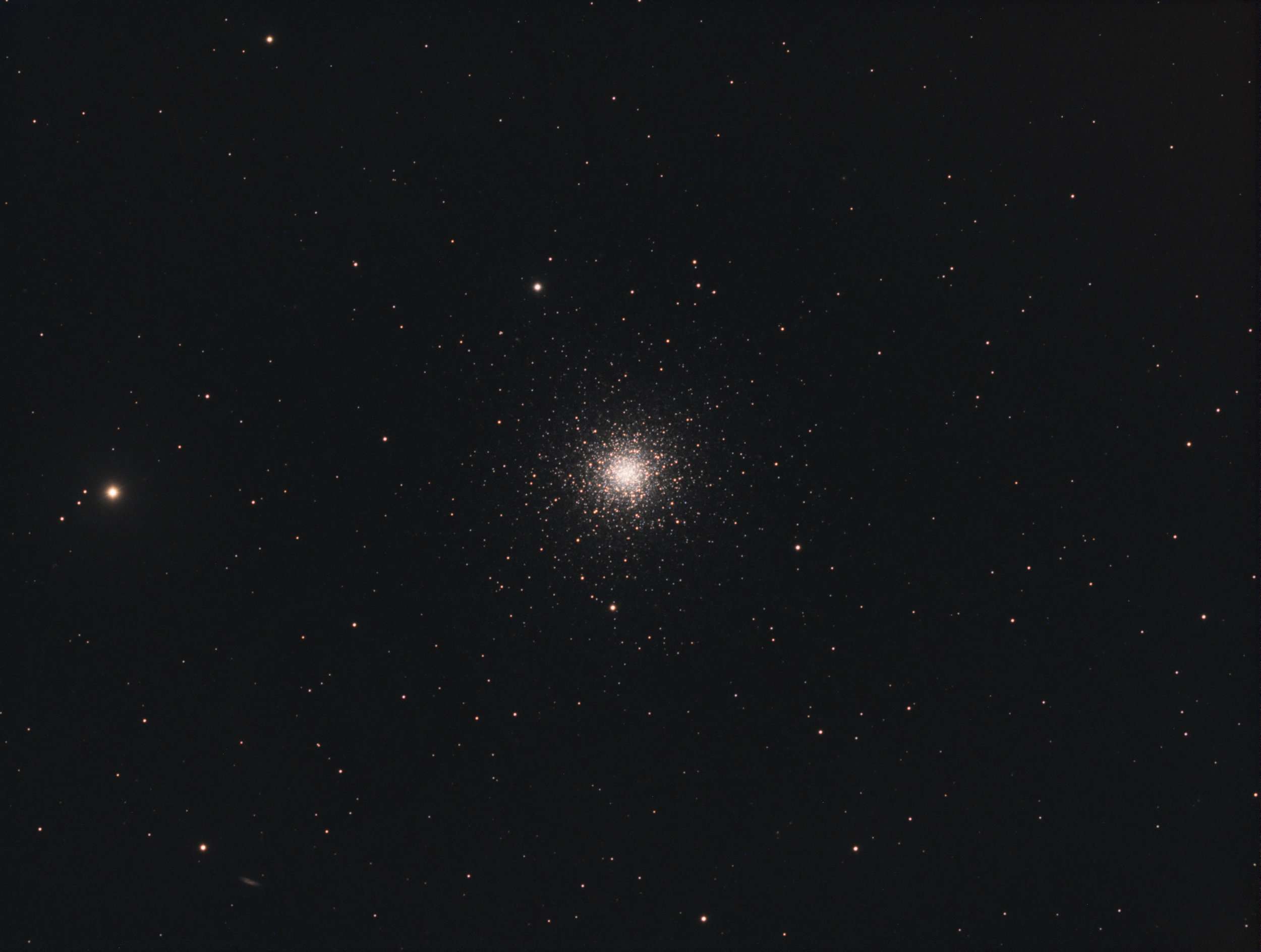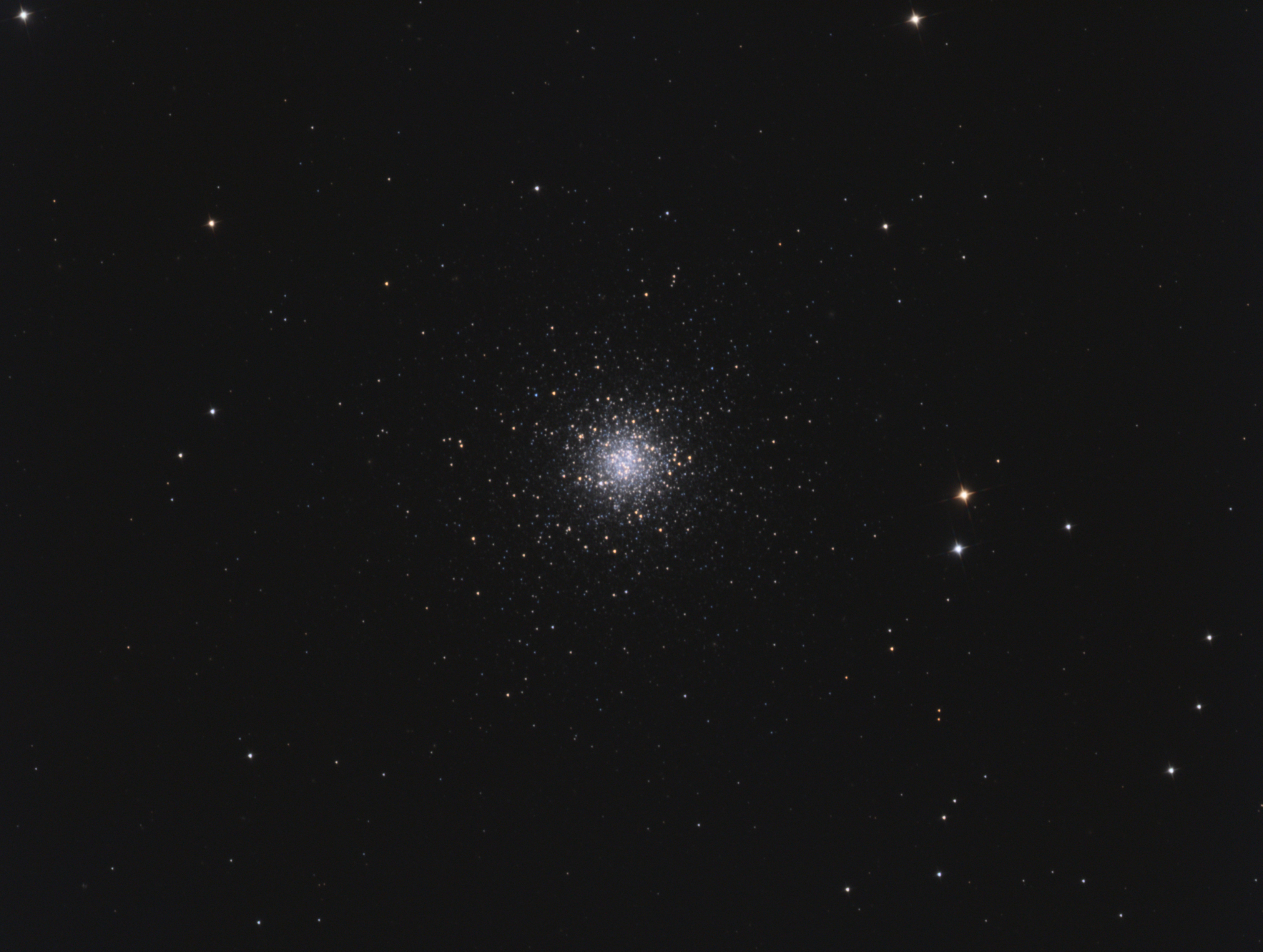Messier 3

Taken from bortal 8 sky in wester Davie Florida
From Wikipedia:
Messier 3 (M3 or NGC 5272) is a globular cluster of stars in the northern constellation of Canes Venatici. It was discovered on May 3, 1764, and was the first Messier object to be discovered by Charles Messier himself. Messier originally mistook the object for a nebula without stars. This mistake was corrected after the stars were resolved by William Herschel around 1784. Since then, it has become one of the best-studied globular clusters. Identification of the cluster's unusually large variable star population was begun in 1913 by American astronomer Solon Irving Bailey and new variable members continue to be identified up through 2004.
Many amateur astronomers consider it one of the finest northern globular clusters, following only Messier 13.[1] M3 has an apparent magnitude of 6.2. making it a difficult naked eye target even with dark conditions. With a moderate-sized telescope, the cluster is fully defined. It can be found by looking almost exactly halfway along the north-west line that would join Arcturus (α Boötis) to Cor Caroli (α Canum Venaticorum). Using a telescope with a 25 cm (9.8 in) aperture, the cluster has a bright core with a diameter of about 6 arcminutes and spans a total of double that.
This cluster is one of the largest and brightest, and is made up of around 500,000 stars. It is estimated to be 11.4 billion years old. It is centered at 32,615.64 light-years (10 kpc) away from Earth.
I’ve been a dedicated to Squarespace fan for 20 years. Love the product, people and company.

![Taken from bortal 8 sky in wester Davie FloridaFrom Wikipedia:Messier 3 (M3 or NGC 5272) is a globular cluster of stars in the northern constellation of Canes Venatici. It was discovered on May 3, 1764, and was the first Messier object to be discovered by Charles Messier himself. Messier originally mistook the object for a nebula without stars. This mistake was corrected after the stars were resolved by William Herschel around 1784. Since then, it has become one of the best-studied globular clusters. Identification of the cluster's unusually large variable star population was begun in 1913 by American astronomer Solon Irving Bailey and new variable members continue to be identified up through 2004.Many amateur astronomers consider it one of the finest northern globular clusters, following only Messier 13.[1] M3 has an apparent magnitude of 6.2. making it a difficult naked eye target even with dark conditions. With a moderate-sized telescope, the cluster is fully defined. It can be found by looking almost exactly halfway along the north-west line that would join Arcturus (α Boötis) to Cor Caroli (α Canum Venaticorum). Using a telescope with a 25 cm (9.8 in) aperture, the cluster has a bright core with a diameter of about 6 arcminutes and spans a total of double that.This cluster is one of the largest and brightest, and is made up of around 500,000 stars. It is estimated to be 11.4 billion years old. It is centered at 32,615.64 light-years (10 kpc) away from Earth.](https://images.squarespace-cdn.com/content/v1/503446fde4b0c36e3ab1695f/1620336827949-2GGBOESPFMOJDLIIT2QV/M3EDGE.jpg)




